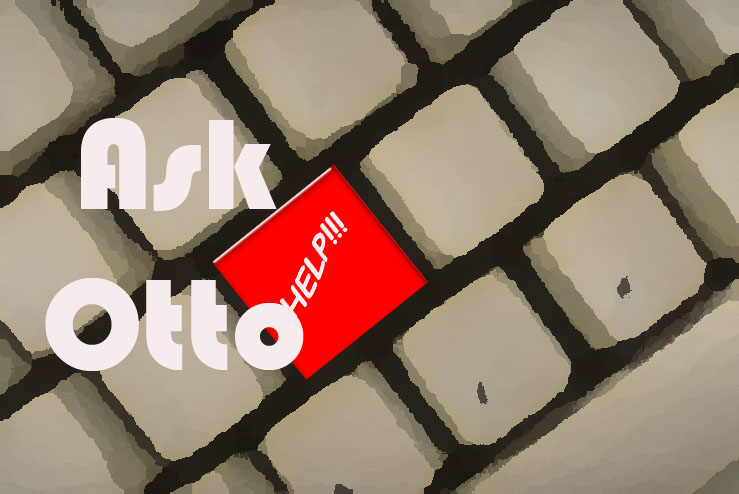Here’s a fascinating article by Ask a Tech Teacher contributor, James Lovelock, discussing the balance between rote drills and integrated learning in teaching keyboarding:
***
 As a pre-service teacher, I have always found the arguments around different forms of teaching and learning to be highly frustrating. Authoritative and Egalitarian models of teaching are considered superior to Authoritarian even though we know that in some cases the Authoritarian approach may be the best due to factors such as cultural expectations or simply the context of a classroom. Likewise, when it comes to learning, while Integrated Learning is certainly the preference there are times when Rote Learning is appropriate to implement.
As a pre-service teacher, I have always found the arguments around different forms of teaching and learning to be highly frustrating. Authoritative and Egalitarian models of teaching are considered superior to Authoritarian even though we know that in some cases the Authoritarian approach may be the best due to factors such as cultural expectations or simply the context of a classroom. Likewise, when it comes to learning, while Integrated Learning is certainly the preference there are times when Rote Learning is appropriate to implement.
It is at this point most educators look at me like I have just said the moon is made of cheese. Rote Learning has become a bit of a dirty phrase in some circles, right up there with corporal punishment as a throwback to an older era of unenlightened education. Rote Learning lacks authentic application and therefore lacks engagement and fails to root student learning in real life applications.
By itself, I’d wholeheartedly agree that Rote Learning in isolation is a weak form of instruction. Having said that, Integrated Learning by itself has its own pitfalls. Take a class of thirty students, tell them they are going to learn how to type only by using it in searches on google and creating reports in Microsoft Office. Students who have already learned how to touch-type at home (like I did in the early 90s) possess significant advantages over students who did not learn to touch-type outside of class and particularly over students who have limited access to computers outside of school.
Results heavily skew to students with prior knowledge and students who lack this knowledge adapt at various rates and can be left behind as expectations on their performance outstrip the skills that they are assumed to have developed. This is without even raising the issue concerning students who are simply presumed to learn a skill through use not necessarily going on to develop correct technique that will sustain their long-term performance, effectively hobbling them. This isn’t equitable teaching; it is convenient teaching.
Normally I’d make the comparison with reading and handwriting and the way handwriting is taught through rote example to ensure students can draw the characters that make up the alphanumeric system before they start composing text where their skill development is ‘integrated’. Presuming someone can read does not necessarily mean they can write and by the same token, someone who can read is not going to magically manifest a touch-typing ability because they just happen to occasionally be instructed to type up a report. That is an obvious comparison but there is a better one to be made.
Anyone who has been instructed in learning a musical instrument knows that before you can start performing songs you have to learn how to play the instrument. When learning piano for example (apt for typing), you learn where to place your fingers, to keep your wrists raised to ensure easier movement rather than resting them on the desk, how to interpret what you read or hear and translate that into music. You learn with basic drills, with scales (so you also learn tonal keys), then you move to basic songs where you put your learning into practice. At the same time, while you learn to play more difficult songs, you keep doing new technique work and learning new scales that support you in mastering increasingly difficult songs.
The same is true of touch-typing; a student learns the basics with forms of Rote Learning that are then consolidated with Integrated Learning opportunities. That learning then supports further explicit teaching of the skill that in turn supports further development and allows a student to engage with more sophisticated tasks that utilise their new learning. There is a clear transition as students transition from Rote Learning to fully Integrated Learning as their skill develops.
It isn’t about Rote Learning vs Integrated Learning since the two go hand in hand and when facilitated with regard to the context that such learning can take place (time available, resources, prior student knowledge/skill) it becomes highly effective. Explicit learning with a skill has to preface application within an authentic situation or it is simply setting up a student for failure.
About the author
James Lovelock currently works for EdAlive Educational Software who are one of the most respected publishers of educational software in Australia and currently oversees the provision of Typing Tournament to various institutions. Having previously worked as a Teacher’s Aide with students who have required technological support to effectively integrate their learning into mainstream environments, he is now nearly at the end of his secondary teaching degree through the University of New England. Having previously been published through the ACCE (Australian Council for Computers in Education), he maintains a keen interest in ICT implementation in the classroom that is authentic, engaging and effective for students of all abilities.
Jacqui Murray has been teaching K-18 technology for 30 years. She is the editor/author of over a hundred tech ed resources including a K-12 technology curriculum, K-8 keyboard curriculum, K-8 Digital Citizenship curriculum. She is an adjunct professor in tech ed, Master Teacher, webmaster for four blogs, an Amazon Vine Voice, CSTA presentation reviewer, freelance journalist on tech ed topics, contributor to NEA Today, and author of the tech thrillers, To Hunt a Sub and Twenty-four Days. You can find her resources at Structured Learning.





































1 thought on “Touch-Typing: Rote vs Integrated Learning or Rote and Integrated Learning?”
Comments are closed.